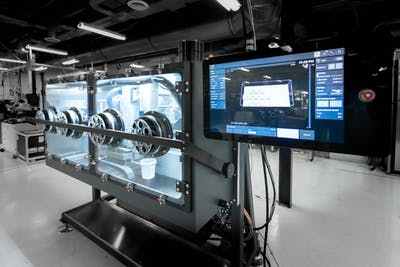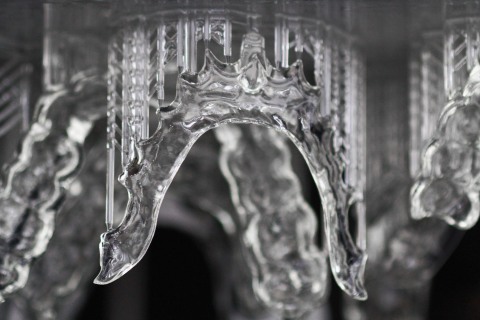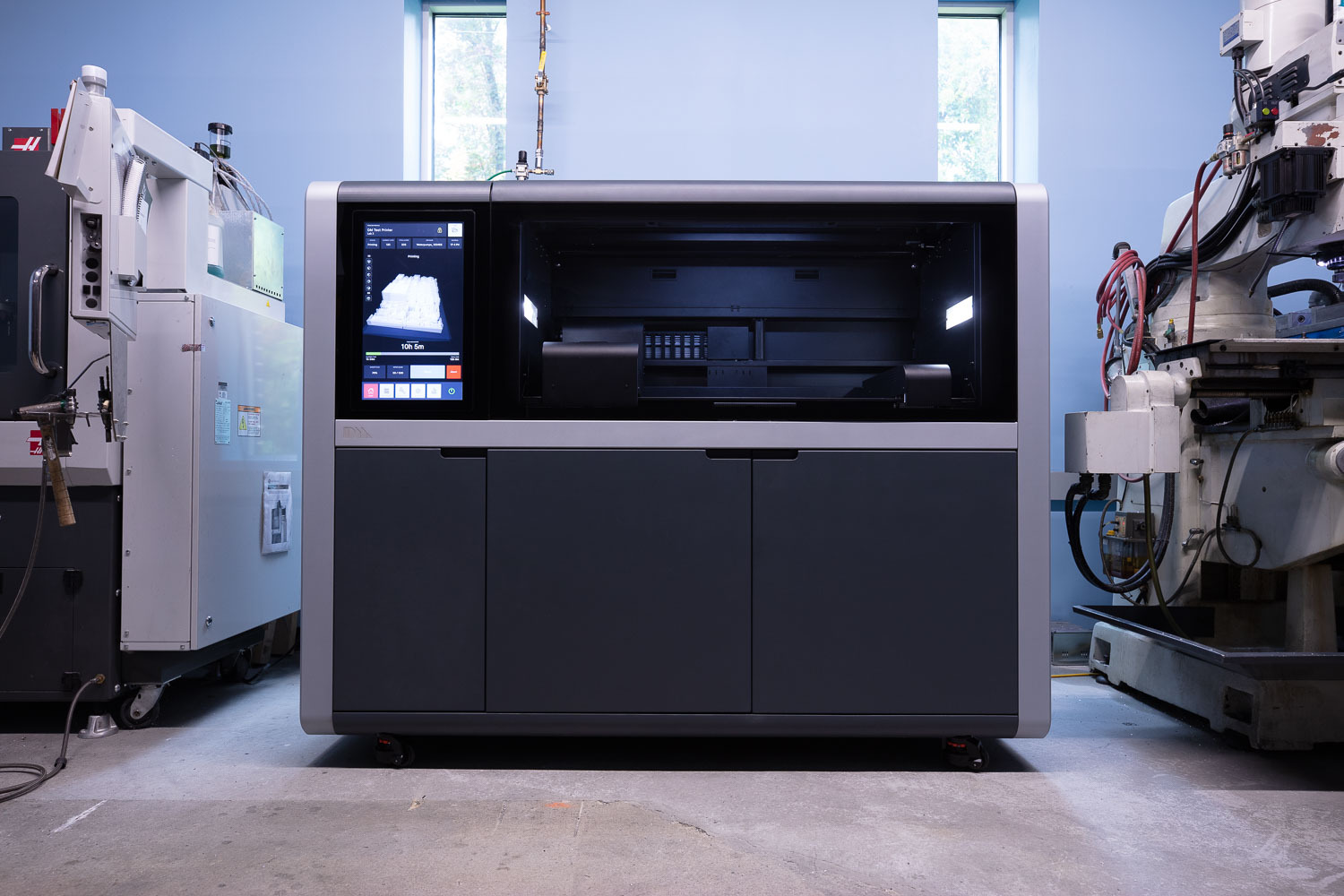Desktop Metal (NYSE: DM) reported losses for its fourth quarter and full-year 2020 in its first financial report since going public on December 10, 2020. However, in line with expectations of sequential acceleration, the leading designer of office-friendly metal 3D printing systems posted a 236% revenue increase in its fourth quarter, a sharp improvement from $2.5 million in the third quarter. The positive sales outlook for the current year is fueled by the acquisition of EnvisionTEC, several patent-pending technologies, and the creation of a new business unit focused on healthcare and dental markets.
The company’s CEO and Co-Founder, Ric Fulop, said in a statement that the fourth quarter of 2020 was transformative for Desktop Metal as it became the “only publicly traded pure-play AM 2.0 company.” The seasoned entrepreneur also described the achievement of critical milestones in the path to drive the adoption of additive manufacturing (AM), mainly due to the global shipments of Shop System, a mass-market binder jetting solution for SMEs and machine shops, and the production system P-1 solutions, the entry-level model for Desktop’s production system platform. Furthermore, based on published figures, in just one quarter in the market, Shop System became the number one selling metal binder jetting system in terms of units.
“Our acquisition of EnvisionTEC in February strengthens our market position by adding a compelling lineup of production-focused photopolymer printers and over 190 qualified materials to our portfolio,” said Fulop. “We are excited to continue building on our strong momentum by capitalizing on both high levels of customer interest and inorganic opportunities in the space as we enter this next chapter of our growth story.”

Desktop Metal expands its Production System lineup with a new printer, P-1, for full-scale metal parts mass production. Image courtesy of Business Wire.
Despite the challenges and disruptions from the COVID-19 pandemic, Desktop moved forward with the global launch of its Shop System. Although shipping couldn’t advance until the middle or second half of the fourth quarter due to supply chain limitations, the strategic global launch proved successful. Fulop is hopeful that as the world comes out of the pandemic, Desktop will see a resurgence as businesses return to their manufacturing spaces.
For the full year 2021, Fulop expects Desktop to generate revenue above $100 million, powered by multiple product launches from the fourth quarter – including the EnvisionTEC Xtreme 8K and Envision One HT – and additional commercial launches during 2021, like the single-pass inkjet technology Production System P-50. The flagship Production System printer P-50 is designed to achieve speeds up to 100 times those of legacy powder bed fusion (PBF) additive manufacturing technologies. It remains on schedule to begin volume commercial shipments in 2021, paving the way for the mass production of end-use parts, unlocking throughput, repeatability, and part costs competitive with conventional mass-production techniques.
In 2020, products revenue fell 40% to $13.7 million, from $22,758 in 2019, while services revenue decreased 25% to $2.8 million, down from $3,681. Desktop posted losses of $25.4 million for the quarter ending December 31, 2020, and losses of $90.4 million for the full year – a 12% improvement from losses in 2019. The year also ended with $595.4 million in cash, cash equivalents, and short-term investments to support organic and inorganic growth opportunities.
Trading under the ticker symbol DM on the New York Stock Exchange (NYSE), company shares went from $18.88 on their inaugural day over three months ago to their highest value of $33.50 on February 8, 2021. Since then, stock value has fluctuated between $29 and $15, settling at $19 two days after reporting earnings.
One of the most significant announcements was the creation of the new Desktop Health business, focused on creating future patient-specific solutions in the medical field. Led by the newly appointed healthcare executive Michael Jafar, the new healthcare segment will leverage Desktop Metal’s comprehensive portfolio of AM solutions for current and future applications spanning dentistry, orthodontics, dermatology, orthopedics, cardiology, plastic surgery, and printed regenerative tissues and grafts. The mission is to combine new AM technologies, including bioprinting, high-speed metal binder jetting, and the use of advanced biocompatible materials across polymers, ceramics, and metals, to develop breakthrough healthcare applications.

Desktop Health’s mission is to create future solutions in the medical field with AM. Image courtesy of Business Wire.
For the development, the company will use EnvisionTEC’s 3D Bioplotter systems, a series of rapid prototyping tools for processing a great variety of biomaterials for computer-aided tissue engineering (CATE), from 3D CAD models and patient CT data to the physical 3D scaffold with a designed and defined outer form and an open inner structure.
The translational bioprinting platform, together with an extensive library of advanced printable materials, will help Desktop create healthcare products and commercialize them. Fulop indicated that many medical and dental implants – which account for $85 billion annually – could be printed and made patient-specific before the end of the decade. Desktop is aiming to commercialize patient-specific solutions at-scale.
Desktop views its AM 2.0 platform as leading the way to empower businesses to finally “realize the promise of additive manufacturing.” Making additive cost-effective is a big driver for Desktop. The company is confident that it has surpassed all of the technology’s limitations and now focuses on mass production at scale of end-use parts at lower costs than traditional manufacturing. Certain that the digital manufacturing landscape will experience a transformation in the next decade, the company will continue to selectively integrate new technologies from acquisitions and in-house production throughout the coming years to maximize sales and position itself as a leader in the industry.
Subscribe to Our Email Newsletter
Stay up-to-date on all the latest news from the 3D printing industry and receive information and offers from third party vendors.
You May Also Like
IperionX Inks 10-Year Deal with Wisconsin Manufacturer for 80 Metric Tons of Titanium Per Year
IperionX, the Charlotte-based supplier of sustainable titanium powders used for additive manufacturing (AM) and metal injection molding (MIM), has signed a ten-year deal with United Stars, a group of industrial...
Gastronology Launches Industrial Production of 3D Printed Food for Dysphagia Patients
Food 3D printing has, in many ways, been an additive manufacturing (AM) segment looking for the right business case. While some applications are beautiful and others may or may not...
Lockheed Martin Leads $3M Investment in Q5D’s Electronics 3D Printing System
Q5D, an original equipment manufacturer (OEM) of robotic arm, hybrid additive manufacturing (AM) systems used for wire harness production, has closed a $3 million investment round. The investment arm of...
3D Printing News Briefs, April 6, 2024: Depowdering, Cybertruck Door Handles, & More
In today’s 3D Printing News Briefs, ioTech’s digital manufacturing CLAD technology is opening up opportunities for microelectronics and additive manufacturing. Hexagon and Raytheon Technologies commercially released the Simufact Additive Process...

































